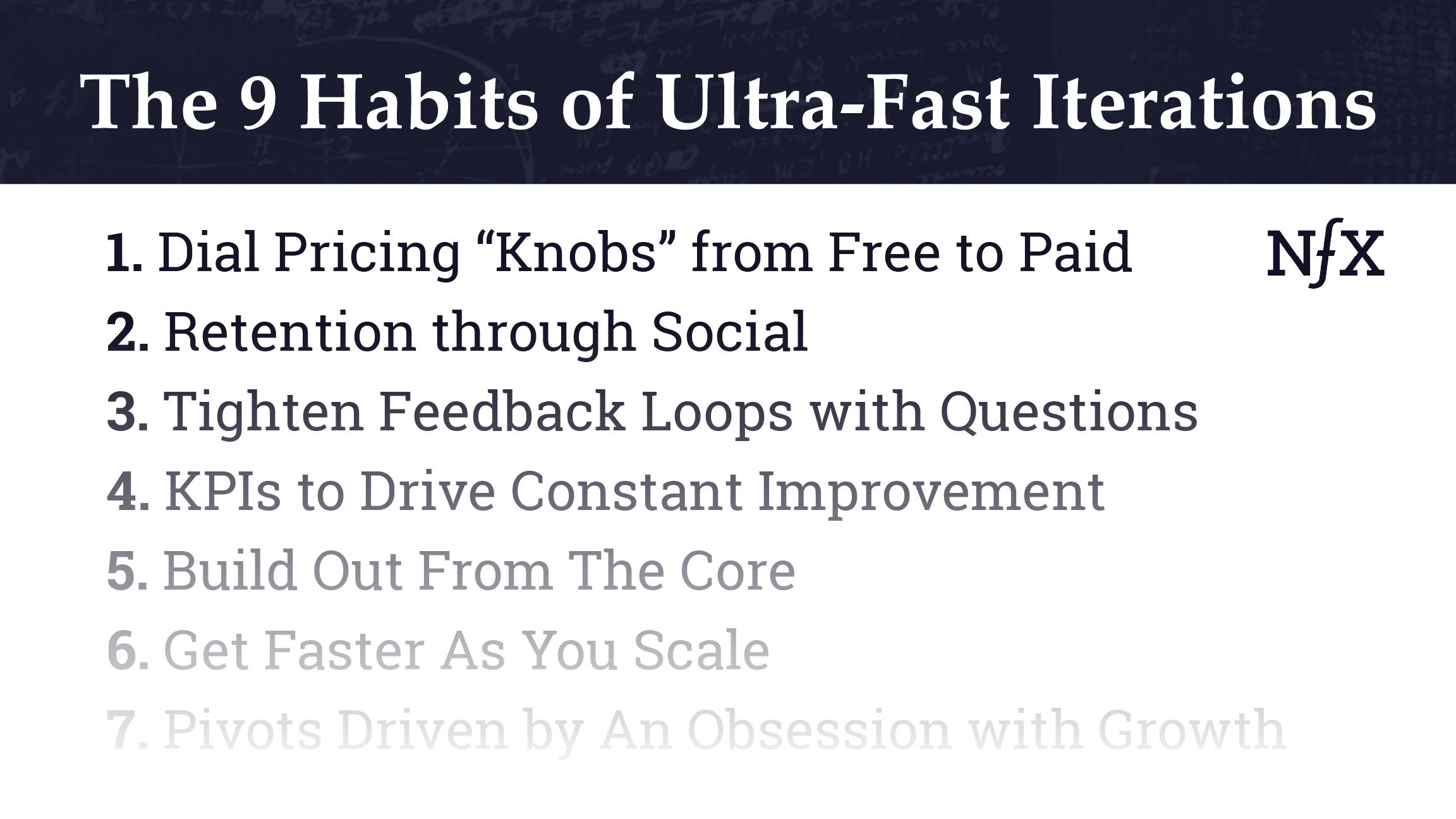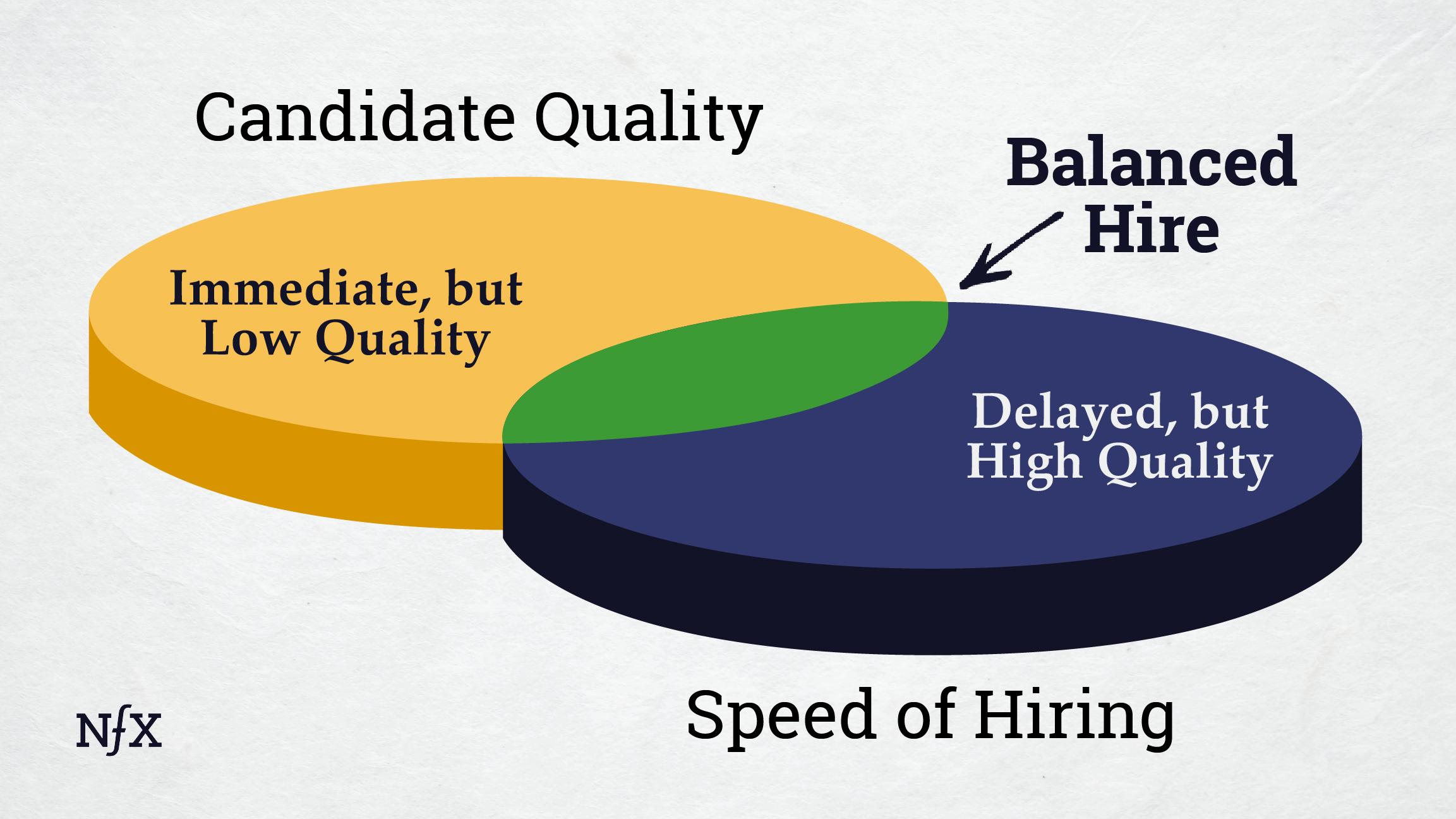

See below for the audio version of this essay read by James Currier.
Startups that grow into transformative companies do two things: (1) they nail the basics and (2) they cultivate the right habits (core operating principles).
The first is mandatory. If you don’t get the basics right, in all probability your company won’t succeed. A list of things we consider basics:
- Fundraising (don’t run out of capital)
- Ship (don’t just talk about it, ship it)
- Customer focus (live & breathe the customer experience)
- Growth (find an effective way to scale)
- EQ (hire well and get along)
- Ethics (stay legal)
In addition to getting these right, something that often goes unobserved is that world class companies embrace similar operating principles which help make them revolutionary. When we see these habits in companies, we take special notice. Below are 9 – there are more, but this is a good list to start.
1. Have Flexible Curiosity
Be prepared to stretch what interests you. Founders who only want to do one thing usually end up failing. Inevitably what ends up working is a little different than what they thought. Founders must have flexible passion — they can’t be tied down to a single, immovable set of tactics. Most startups have to learn and adapt. You’ll likely end up serving a different customer, in a different geography, in a different way than you thought.
Learn to expand your curiosity and acquire new interests. Become interested in payments, not collaboration software (for example). This is a mental leap you’ll likely have to take at some point as a Founder.
2. Make It A Network
It doesn’t have to be a social network or a marketplace — there are many types of networks. Whatever you choose, it’s important to always be finding ways to switch your product from single-player mode to multi-player as soon as you can. If you do that, instead of having to deliver all the value to your customer yourself, you can set up a flywheel and have your customers create value for each other.


Single-player products increase their value to the user at a linear rate. Multiplayer, networked products can become more valuable at an exponential rate.
If it’s not a multiplayer network of some kind, always be asking yourself “how do I build network effects?” If you can’t build network effects, how are you defensible and how do you create value?
Examples of companies that moved to multiplayer mode after starting off single-player include:
- Apple (adding iOS, a 2-Sided Platform network)
- Amazon (adding a third-party marketplace, as well as data nfx via reviews)
- OpenTable (SaaS software for restaurants opened to a marketplace)
- Hipstamatic was a single player app, Instagram cloned it and made it a network.
3. Find the White-Hot Center


In every market you’re targeting, there’s going to be an irregularity. If you look rapidly and smartly enough, you will typically be able to find some subsection of people who are much, much hungrier for your product — a small group within your potential customer base that’s highly engaged/motivated. People who are burning white-hot for your product.
Sometimes those people aren’t necessarily who you thought your target customer was.
In fact, they are often what we call “non-utilizers” — people who perhaps weren’t using anything before, but for whom your product enables something transformative — typically a) to get into business and start making money, b) to make more money than they were before, c) to look good to others, or d) to accomplish some other goal that they couldn’t if your product didn’t exist.
Once you find this white-hot center, you’ll be surprised at how fast it can bleed into other segments from there.
Amazon narrowly targeted readers as the “white-hot center” in the online retail market and expanded from there to the “everything store.” Facebook started as photo-sharing for college students who had 50% daily retention, a magnificent signal of white-hot engagement. Opendoor started with Phoenix, where there are only 5 types of homes. Cell phones started with business people. The list goes on.


4. Tell a Compelling Story
As a CEO, you are Storyteller-in-Chief. Telling your story in compelling ways, and adapting that story to the audience and the moment, is your most important job. It’s what gets you all the resources to build your company. Your story is a narrative that everyone wants and needs to hear. It tells your customers what you can do for them. It tells your investors what they’re investing in and what they can brag about. It tells your employees what they’re getting involved with; why they’re turning down a whole lot of other opportunities to join and stay with you.


In the end, it even turns out that your story drives your own motivation, your own speed, your own excellence. I’ve seen companies that were dying because the management teams were depressed. Then they heard something from a customer or an investor, and they were able to change the story. A new narrative transformed their energy, and the company began to turn things around. It’s incredible how much of a catalyst a well-told story can be for startups.
It’s great to have a lot of “real stuff” — concrete accomplishments and numbers that you can point to— but unless you can also tell the story well, it won’t lead to anything. So as a Founder you have to do two things at once. You have to do something that’s real, and you have to tell the story about what you’re doing in a way that isn’t boring.
Keep in mind that a story is just an account, a representation of what you’re doing. It is not an exact, detailed reporting of the step-by-step chronology of events. This is why there’s an art to storytelling. Learn to leave out the boring details. I get that it’s hard to do, because the boring details are the reality you live every day, and it’s easier to just directly relay your experience. But you have to tell the story with the audience in mind, not you in mind. Think about what’s interesting to them. Use their words. Draw analogies to things they already know. Putting in this effort will repay itself with interest. Storytelling should be your #1 superpower as a CEO.
5. The 11 of 13 Rule
This is something I got from Dennis Hightower, who at the time was head of Disney International. He asked me why I wasn’t doing something, and I responded by explaining the pros and cons of two different ways of doing it. Thoughtfully, he replied “You know, there are 13 ways of doing anything. 11 of them will work. Just pick one and do it.”
The best Founders avoid over-analyzing. At a startup, you don’t have time — and the result will most likely be marginal. Pick a way and do it. Be consistently decisive.
6. Go Full Speed


Like an X-Wing fighter in Star Wars, your startup is small. So speed is your number one advantage. It is both the #1 and #2 indication of your eventual success.
Speed is a formula for success because:
- Rapid product beats the competition
- Rapid results build team morale, leading to even more results
- Rapid results generate more interest (from the press, customers, prospective hires, etc.)
- Rapid results increase valuation
You could beat any grandmaster at chess if you could move twice every time he moved once. Speed gives you the edge. As a benchmark, you should be conducting 20-100 experiments per month at a startup.
7. Start With Language


“If you can’t explain it simply, you don’t understand it well enough” – Albert Einstein
Most people say “We’ll build a product, and then put language on it to explain it to people.” This is backwards.
The question is: What are you to your customer? For them, what’s the promise of what you’re doing? That is communicated with language.
Our reality is structured by language. Even if you don’t have a product yet, you can get a long way just with the right words. Language is the center of your company, it’s not something you add later. Language is at the core of your company, even before product.
The most high-impact companies think about language first and features second. You can build a whole company on the power of a phrase. “Find old friends” became Classmates.com. “Free IQ test” became Tickle. It can also change how people think about your product, including how you yourself think about it.
8. Test & Iterate


A startup is supposed to be a learning machine. In order to learn, you have to love your data. No data, no learning.
Early stage CEOs should obsess about metrics. You must be committed to measuring and analyzing everything. 20-40% of engineering time might be spent on measurement and reporting systems.
We’ve written before on the importance of KPIs and how to select them (for more on the subject, see our KPI checklist). Once you’ve identified the right metrics to focus on — metrics that could change what you do — use them to continually test and iterate.
9. Look For 10,000% Changes in Important Metrics
Don’t settle for incremental changes. Always be looking for the 10,000% changes that can take your business on a breakthrough growth trajectory. Most of us want to feel good at the end of each day, so we lie to ourselves and say that improving a metric by 5% or 20% was a good day. But for world class founders, that’s not nearly good enough. Have the character and drive not to settle. Keep pushing for 10,000% every day.
As Founders ourselves, we respect your time. That’s why we built BriefLink, a new software tool that minimizes the upfront time of getting the VC meeting. Simply tell us about your company in 9 easy questions, and you’ll hear from us if it’s a fit.



